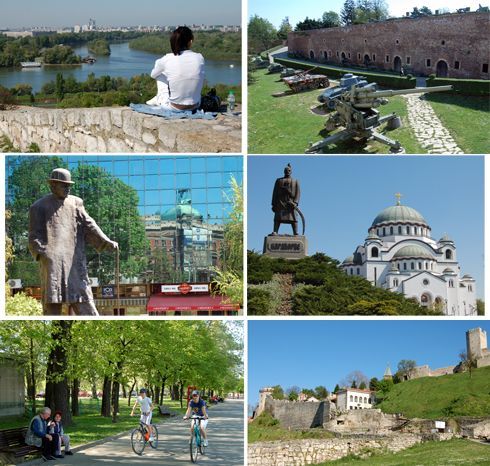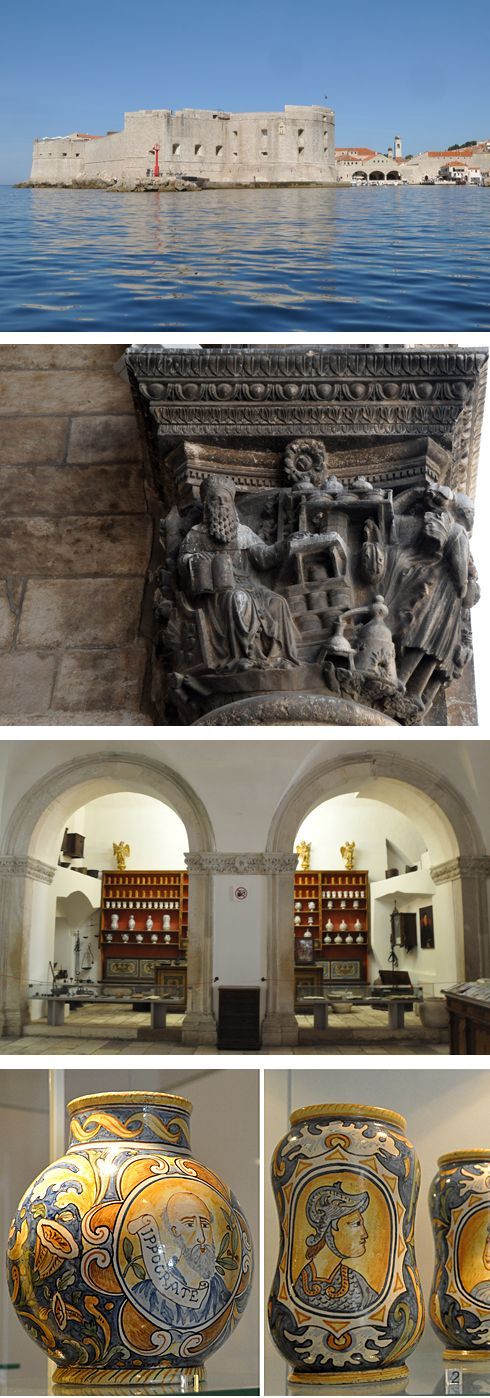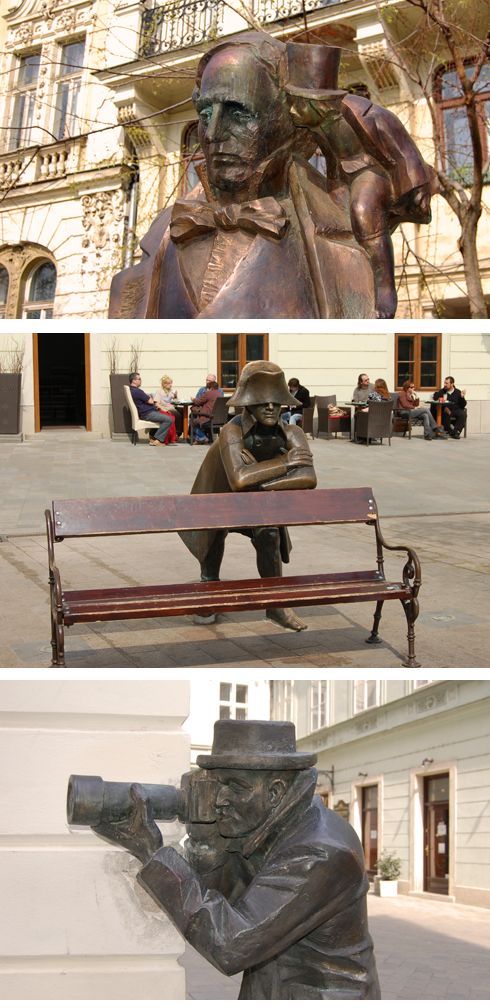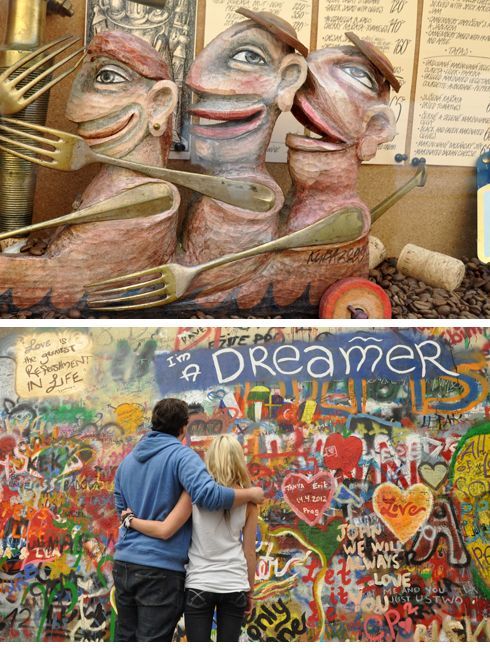Article
Should American Tourists Make Their Own Exit from Europe? Part 5
Author(s):
In part 5 of the Andersons' tour of Europe, we visit Prague, Budapest, and beyond.
This is the 5th entry in a multi-part tour of the European continent. Part 4 can be read here.
(Photography by the author)

I would guess unless Americans had family from some of the central European counties, they would not be too familiar with them. And if they did have family from, say, Poland they might be disappointed even horrified at how poorly those countries have been treated by their neighbors. We stood once with a Uniworld river guide overlooking the confluence of the two rivers Danube and Sava that wash past the Great War Island in Belgrade, which although less than one square mile has been a historic “strategic point either for the conquest or defense of Serbia’s capital, Belgrade.”
Our guide was close to crying. “This place has never seen peace,” he muttered, “Why is Europe always at war?” The Ottoman Empire, for example, launched its attack on the Belgrade fortress in 1521 and in 1813, three centuries later, local rebels were still trying to separate Serbia from Ottoman control. And the island saw war again in 1915 when, in the Great War, Austria-Hungary forces, one of the world’s great powers, launched their attack against the city from the same island.
The Brits have been critical of the European Union yet under EU supervision from about 1958, the date I graduated from med school, Europe has been relatively quiet. At least France and Germany, perpetual enemies, have been on better behavior.

About 110 miles northwest of Belgrade lie the towns of Vukar and, beyond, Osijek in Serbia, Uniworld had arranged for its 120 passengers at its expense to be divided into small groups of a half dozen or so guests for lunch with a Croatian family. It was heart-breaking to think of how peaceful the United States is most of the time then to see the village walls here peppered with bullet and shell holes. Even the chimney that hosted a stork’s nest had its share of bullet holes. And to see an innocent family putting on such a brave front surely encouraged us to be better persons ourselves.
Croatia has this strange shape like a lower case N that has been pushed over to our left so it’s hard to understand if the distance south to Dubrovnik on the Adriatic Sea, about 350 miles, is as the crow flies or by road. If the latter, you’ll be crossing Bosnia and Herzegovina, so how are you with sign language? I did it the easy way: Osijek by the Uniworld Boutique River Cruise Collection and Dubrovnik a year later on the Adriatic Sea with Silversea Cruises at a family reunion that my kids still talk about.

The ancient port of Dubrovnik had been on my list for about 30 years so it was an especial treat to share it with my family. It has a lot of medical history as you might see if you click here. The way to learn about Europe is to read, then walk, along a coastline or river bank, especially, and then just slowly look around. You are not smelling the flowers but absorbing history.
Oh sure, you’ll want to visit Hungary’s magnificent Budapest, the conjoined cites like our own Twin Cities. While we were there in Buda or Pest, I forget which, I contacted the curator of the Semmelweis Museum of Medical History hoping it might have some artifact that would help visitors touch the life of this dedicated doctor, Ignaz Semmelweis, but it had nothing. So the uncommon unkindness done to this physician who believed you should -- at least -- wash your hands before doing a bare hand pelvic on pregnant women and who actually was kicked out of Vienna because his results were better than his Austrian colleagues suffers the ultimate indignity: there is nothing in his own country from which we can remember him.

Hungary and Mongolia are two countries that honor the horse. Visitors arranging their own European adventures might find the government buildings copied from London’s Houses of Parliament easily enough but would they be able in timely fashion on a brief visit discover the Lazar Lovaspark, the Hungarian Equestrian Park, 20 miles from Budapest in the Godollo Hills? It’s an extraordinary demonstration of how, for example, horses can be trained not to react to noise, even gunshots, which in former days in a cavalry regiment might have won a battle for those with specially trained mounts.

Bratislava was a fun walk from where our Uniworld river boat was tied down and, truthfully, we made it a quick one because it was close to tea-time and scones and cream teas are surely an important part of any cruise! There were lots of statues to photograph in town in the Hviezdoslav Square, starting with one of Hans Christian Andersen, his muse whispering in his ear. Once asked for a fairy story he supposedly said, “Your city is a fairy tale itself!” Napoleon's visit in 1809 was not much of a fairy tale: he blew up Devin Castle near Bratislava. A soldier dressed like Napoleon leans over a bench in the Main Square. And just around the corner in Old Town, those delightful people who are always standing in front of you with their full size iPad cameras will find they are the subject themselves of a professional photographer with a massive camera the size of a bazooka anti-tank weapon.
All central European roads seem to lead to Prague. Indeed, claims from enthusiastic European tourism offices often say their city is “the next Prague.” It is not. It could not be. Prague is unique among major European cities: it really wasn't damaged in World War II. The reasons apparently include, first, that the city is surrounded by relatively dense forests such that a massive panzer attack by German armor supported by artillery could not be achieved. And second, Hitler supposedly intended to create museums in Prague that would show how his marvelous Reich had achieved the defeat of all Europe. He was actually planning a museum that would also demonstrate incredibly how competent his plan had been to deal with “the Jewish Problem”
Prague could well be the highlight of a European grand trip for many people. “The problem with our city,” a Prague guide once told me, “is that 95 percent of the tourists are in 5 percent of the city.” Prague is busy. Public transportation, as ever in Europe, is pretty good. We had a Rail Europe pass but heard that Brno, the Czech second largest city, was better reached by a student bus service from Prague and it was actually faster than the train. It was and Brno was different but staying in Prague would have been better especially as the guide for Brno could not get permission initially from the Church for the Mendel's artifacts in the monastery to be photographed. We had thought in error the publicist for the Czech Republic had arranged it, but she had not.

Nevertheless, the Czech Republic is a great visit whether you are gazing through a restaurant window at how much fun the Czechs now seem to be getting from life. or watching a local couple dreaming at what used to be called John Lennon's Wall. Used to be. When Prague was under the Communist regime in the 1980s a simple wall became a scrapbook for art and graffiti that would how students felt about the establishment and love and life. In November 2014, some students decided their current graffiti needed a place so instead of finding another wall, they whitewashed the John Lennon Wall to create space for their much more important thoughts. Sounds as they have “entitled” students in Prague just as we have in the United States.
The Andersons, who live in San Diego, are the resident travel & cruise columnists for Physician's Money Digest. Nancy is a former nursing educator, Eric a retired MD. The one-time president of the NH Academy of Family Physicians, Eric is the only physician in the Society of American Travel Writers. He has also written five books, the last called The Man Who Cried Orange: Stories from a Doctor's Life.




